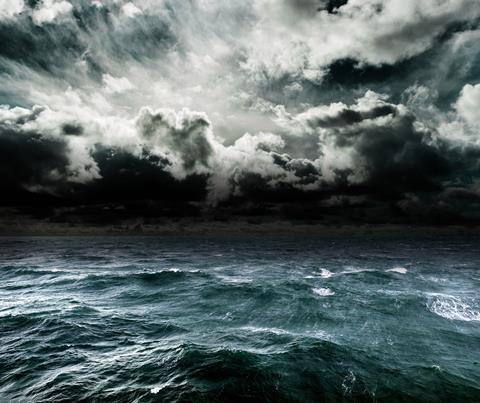Moody’s Insurance Solutions projects climate-related physical risks could wipe 14.5% off global GDP by mid-century, with US corporates and real estate particularly exposed.
The global economy could face losses of $41.4trn by 2050 due to physical climate risk, equivalent to a 14.5% hit to global GDP, according to new analysis from Moody’s.

Two-thirds of the projected loss would come from chronic pressures such as sea level rise and productivity decline, the report estimates, while the rest would stem from more frequent and severe natural disasters.
“The best available science and assessment of current policy scenarios suggest even bigger and more frequent disasters as we look further into the future,” said Moody’s, which includes catastrophe risk modeller RMS as part of its group.
US hit hard
The US faces a 9.5% GDP loss by mid-century, worth around $6trn, according to Moody’s.
Moody’s forecasts annual disaster damage costs for the US will be 26% higher in 2050 than in 2020.
The hit to corporate profitability is also significant, with operating margins expected to fall by two percentage points – equal to $1.5trn in damages.
A typical US commercial real estate (CRE) loan portfolio could see default probabilities rise nearly 18% and expected losses jump more than 20%, or $200m.
“Profitability impacts of this magnitude represent a significant financial challenge to companies, hurting their ability to service debt, fund growth, and return value to shareholders,” said the report.
Physical risk already visible
The paper highlights recent catastrophes as an indication of future pressures.
Global natural catastrophes in 2024 caused $320bn in economic losses and $140bn in insured losses, according to Munich Re.
That year marked the fifth consecutive period of insured catastrophe losses exceeding $100bn.
Moody’s RMS Event Response put insured losses from the Los Angeles wildfires at between $20bn and $30bn.
“These results provide a baseline for understanding the economic and financial impacts,” the report said.
Modelling suggests physical risk will hit sectors unevenly, according to the analysis.
Consumer products and chemicals are among those most exposed because of facility locations, while utilities and mining are vulnerable due to their heavy reliance on tangible assets.
For corporate America, the impacts vary widely, with roughly a quarter of firms seeing little effect but more than a quarter suffering operating margin reductions of 100 basis points or more.
Adapting to the future
The analysis found the probability of default for US companies could rise 74% by 2050 once climate risk is factored in.
Regional impacts are also uneven. In a sample CRE loan portfolio, expected losses climbed from $1.21bn to $1.48bn under the climate scenario.
According to the analysis, for loans tied to New Orleans properties, default probabilities surged 43% and expected losses rose almost 62% due to combined exposure to floods, hurricanes, wildfires and sea level rise.
Moody’s said its 30-year record of catastrophe modelling has helped regulators and market participants assess risk.
Since 2021, the insurance solutiions arm of the ratings firm has extended its analytics to 2100, integrating physical risk into macroeconomic scenarios and credit models.
“The economic and financial perspective on physical risk can help inform new approaches in risk transfer and strategy by offering a common language of risk across the financial sector,” the report said.
For institutions, this means using tools to stress-test portfolios, identify hotspots and adjust plans as climate scenarios evolve.
“As we look ahead, the challenge is clear, but so is the path forward: Identify and quantify interconnected risks, embrace innovation, and invest in resilience,” Moody’s added.










No comments yet